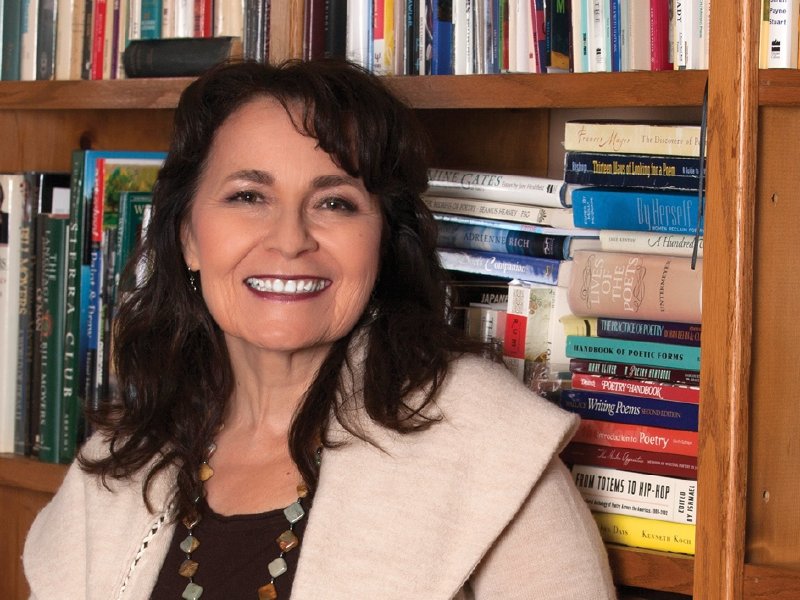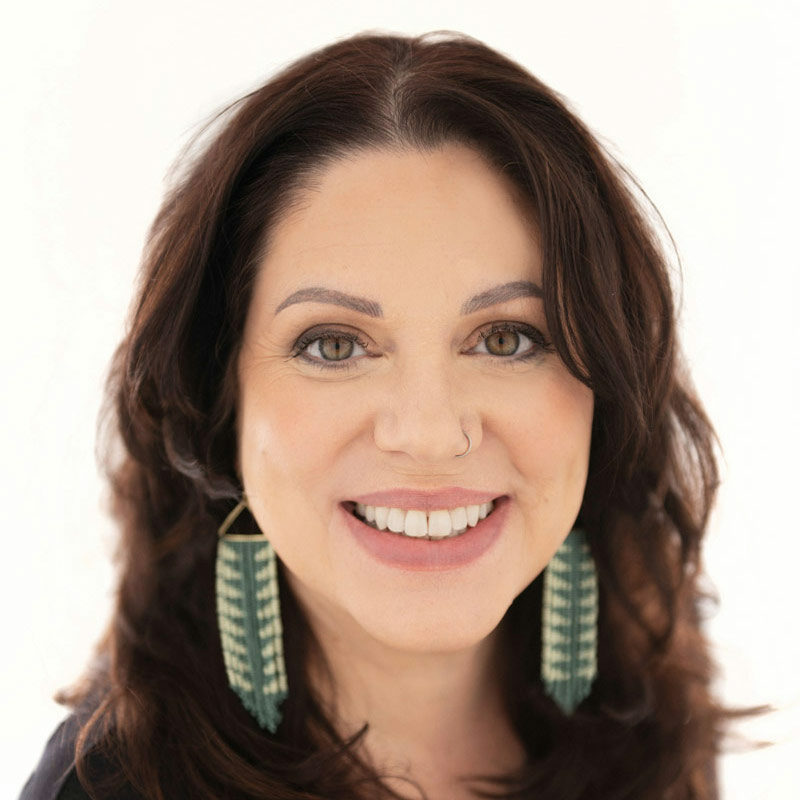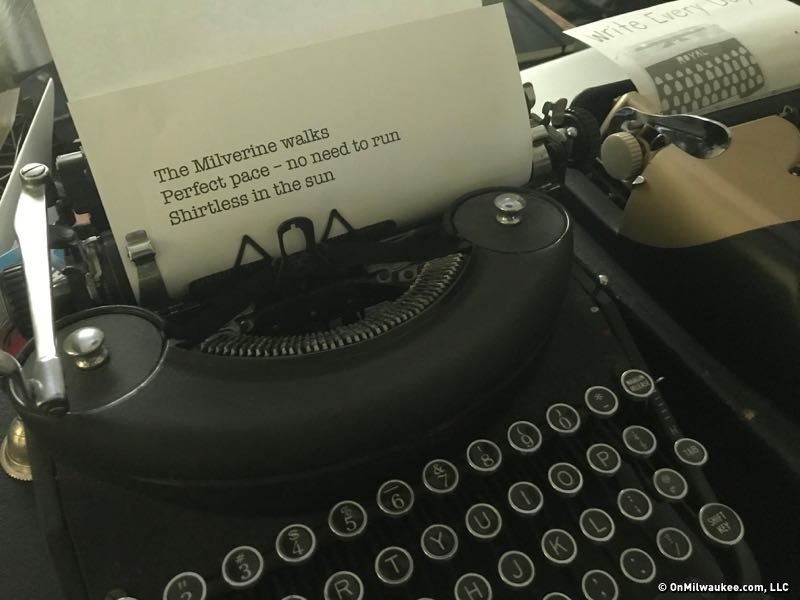Earlier this month, the Wisconsin Poet Laureate Commission named Kimberly Blaeser as the new Wisconsin poet laureate for 2015-16. Blaeser is a professor of English at the University of Wisconsin–Milwaukee, where she teaches creative writing, Native American literature, American nature writing, life writing, writing as a spiritual quest and more.
Blaeser is of Native American (Anishinaabe) ancestry, an enrolled member of the Minnesota Chippewa Tribe who grew up on White Earth Reservation in northwestern Minnesota.
Blaeser’s work has been translated into several languages, including Spanish, Norwegian, Indonesian and Anishinaabemowin. She has performed her poetry around the world and gave readings in more than two hundred different venues in a dozen different countries.
She is also very active in social justice issues and currently serves on the editorial board for the American Indian Lives series of the University of Nebraska Press and for the Native American Series of Michigan State University Press.
Recently, OnMilwaukee.com caught up with Blaeser and chatted with her about her writing, her family life, how being Native American influences her work, her favorite writers, the power of a good nap and what exactly the poet laureate does.
OnMilwaukee.com: What are the poet laureate’s duties?
Kimberly Blaeser: In a phrase: to be an ambassador or "voice" for poetry and, more broadly, to encourage engagement in the arts throughout Wisconsin. What that means on a practical level is to promote poetry through participation in programming including readings and public presentations, and to support it through publications, educational events, and through the various media. The Wisconsin poet laureate is specifically tasked with visiting all areas of the state at least once, and in undertaking a special project during the time he or she serves.
OMC: What do you plan to do as poet laureate?
KB: I’m certain I have more ideas than time, but let me share a few of them. First, I have begun planning for a monthly radio program that will feature Wisconsin poets and poetry events. I’d like to create a space for conversation with and performances by regional poets, and expect to feature both well-known Wisconsin writers as well as newer voices, including student poets.
I’m also excited about the possibility of bringing poetry into more public spaces and events — to unusual places. I’ve mentioned the Horicon Marsh (maybe to their bird festival if the planners will have us), to athletic events, flower shows or sushi bars. Right now I am beginning to think about how to work with writers around the state to highlight recitation using social media (think ice-bucket challenge, with a twist).
And, on a more practical level, I also plan to draw upon my past experience in editing anthologies and work to bring the poetry of Wisconsin writers to press for Wisconsin readers.
OMC: How do you respond when people say they don’t "get" / understand poetry?
KB: Sometimes, with the best intentions, classroom teachers pin poetry to too neat an equivalency and therefore instill in students a fear of "getting it wrong." I like to invite readers and listeners to enter poetry in whatever way suits them. You can "get" poetry partly through its rhythm or cadence alone. In the same way that music affects us, the sound of language can carry us, make us feel or experience a certain emotion. Or an image – think word picture – can spark an imaginative moment of understanding. The choice of words, the diction of a poem, also helps create meaning. For example, simple phrases like "owl moon" or "stalked by hypochondria" conjure very different reactions.
Perhaps the most reassuring thing I might say to someone who feels anxiety about "getting" poetry is that often poetry is not interested in a single ultimate "meaning" as much as it is in engaging us in the process of exploring ideas and small moments of truth. Sometimes in a poem words or images bump against one another in a way that creates a "spark," a flash of illumination in our quest to understand the world. I often say poetry helps us pay attention to what is around us, to see it in a new way, from a different perspective. That often happens not through poetry presenting a mathematical equivalency of meaning, x + y = z, but through the simple gesture of language, the poet asking us to see again that which we may have previously overlooked.
OMC: Is poetry more or less popular today than it was when you started teaching?
KB: I would say the difference between when I began teaching and now involves not so much the waxing or waning popularity of poetry as it does the differing uses of poetry and the different places we might find it. We find more poetry on the Internet. Poetry has been brought into public places like taxi-cabs and buses. The poetry slam has become common. Poetry has begun to be used more in social or political movements: poetry against war, poetry in response to 9/11, etc.
OMC: Who are some of your favorite poets?
KB: I’m a bit eclectic in my gathering of poets. Among those whose work I read and admire are Native American writers such as Linda Hogan, Simon Ortiz, N. Scott Momaday, Joy Harjo, Gordon Henry, Ofelia Zepada and the Erdrich sisters, Louise and Heid.
I love the work of many of the younger Native poets like Natalie Diaz and Layli Long Soldier. I have also long loved Pablo Neruda, translations of the haiku masters Basho, Issa, and Buson, and translations of the work of Rumi and Li Po. I am drawn to the work of Czeslow Milosz, Anna Swir and Seamus Heaney. I’ve read a bit of Baudelaire in translation and some in French when my language skills were better and certain of his poems have always stayed with me.
I also grew up reading, hearing, sometimes memorizing long narrative poems like those by Whitman and Poe as well as work by e. e. cummings, Hopkins, Blake, Frost and Dickinson. Other poets on my shelves include Dylan Thomas, Carolyn Forché, Jimmy Santiago Baca, C.D. Wright, and the work of regional writers including many Wisconsin writers and that of all my colleagues at UW-Milwaukee.
Something about the work that arises from people in your own communities has a special resonance. I taught Milwaukee poet Susan Firer’s work in one of my classes a couple of years back and the students thoroughly enjoyed work from someone who writes about places they know. I could go on and on and wish you had the space and I the leisure because it is a shame not to name all the wonderful regional poets. Luckily, during my tenure as Wisconsin poet laureate, I will have opportunities to celebrate the work of the writers in our state.
OMC: How has being Native affected your work?
KB: My Native identity and grounding in the Anishinaabeg culture affects the way I see and interact with the world, how I go about my work and the work I choose to do.
In the case of my writing, you can trace the influence in many ways: subject matter, language, epistemology, aesthetic underpinnings, etc. For example, many people note the focus in my writing on the natural world as well as the prevalence of poems of resistance.
In terms of my approach to say, poetry of place, I assume a vitality and integrity in the land and its creatures. Land is storied and alive. That is how I have been taught to see, understand and interact with the world. Therefore, that is the relationship embedded in my poetry. In addition, the historical and contemporary experiences of Indigenous people inform much of my work.
Which is not to say you won’t find many other subjects and influences: I have "mother" poems, poems arising from engagement with other works of art, work surfacing out of travel experience, poems of everyday experiences, playful poems, reflections on contemporary politics, etc.
OMC: Do you have any upcoming readings?
KB: I’ve agreed to do a TEDxUWM talk Friday, Feb. 13 which will be a new experience for me. There is a "passing of the torch" event being planned for late in February in Milwaukee and things start to come fast and furious beginning in March. Max Garland, the outgoing Wisconsin poet laureate, says to have my tires rotated, and just to be on the safe side I’m thinking I’ll have my shoes resoled, too!
OMC: Is Milwaukee a strong "poetry city?"
KB: My experience with Milwaukee and poetry has been wonderful both in terms of the writers here and the number of events held. Just between our campus at UWM and the sites in the immediate surrounding area – Woodland Pattern Book Center, Boswell Books and Marquette – this fall you could have feasted on poetry roughly half the days of every week.
Teaching in a Creative Writing program, of course, puts me into more contact with fine poets. Our talented faculty includes not only our tenured poets — Brenda Cárdenas, Maurice Kilwein-Guevara and Rebecca Dunham – but also lecturers and adjunct faculty who are also fine practicing poets.
And, of course, our graduate program attracts some of the best young writers, several already with books, poets whose names will no doubt soon gain national attention. Indeed, one of our current grad students, Brittany Cavallaro, was just awarded an NEA poetry fellowship along with one of our Emeritus faculty members, Susan Firer.
Funding for the arts is always a challenge, but talent we have in spades in Milwaukee.
OMC: Where do you live? Family?
KB: I live with my husband and two children – Gavin, 18, and Amber, 15 – on 6 1/2 acres in the woods and wetlands of Lyons Township – midway between Burlington and Lake Geneva. It is an area people call the "knobs" because of the small rolling hills and the mini-kettles.
My husband is employed by Kimball Electronics. His job puts him in contact with people around the world, and he travels frequently.
Gavin is a freshman at University of St. Thomas in St. Paul and Amber is a sophomore at Catholic Central High School in Burlington. Len’s and my parents have passed away, but I still have lots of family in Minnesota. Both my brother and sister-in-law are attorneys. My brother, Robert, is the Chief Judge of Tribal Court at White Earth having retired as judge in Hennepin County.
OMC: What else do you like to do with your free time?
KB: I’m not certain Americans have free time anymore! But among my non-official activities is my futile effort to keep my son and daughter from transforming too quickly before my eyes. I love to keep up with Amber's sporting and school events and really to spend as much time with her as I can before she, like Gavin, is whisked away to adult pursuits.
My other interests include wilderness expeditions and wildlife and nature photography. My husband Len and I have traveled to many natural areas and, for as long as we have known one another, have always spent time in the Boundary Waters Canoe Area Wilderness (BWCA). We actually have a water-access cabin there now, so we spend part of each year in the BWCA and many of my photos are taken while out canoeing or kayaking.
Among my current artistic preoccupations is the creation of "Picto-Poems" which brings my poetry together with nature and wildlife photography. In these I try to explore intersecting ideas about Native place, nature, preservation and spiritual sustenance.
I love many other things: reading, card playing, fishing, etc. I remember one of my former students once writing about napping as such a wonderful pursuit and how, at the time, I thought that a quirky thing to ID as a pastime. Now, when things get crazy, I am beginning to understand. I think with great nostalgia and longing about an idyllic hour I spent napping on moss in the woods at a campsite on the Kawishiwi River.
Molly Snyder started writing and publishing her work at the age 10, when her community newspaper printed her poem, "The Unicorn.” Since then, she's expanded beyond the subject of mythical creatures and written in many different mediums but, nearest and dearest to her heart, thousands of articles for OnMilwaukee.
Molly is a regular contributor to FOX6 News and numerous radio stations as well as the co-host of "Dandelions: A Podcast For Women.” She's received five Milwaukee Press Club Awards, served as the Pfister Narrator and is the Wisconsin State Fair’s Celebrity Cream Puff Eating Champion of 2019.







